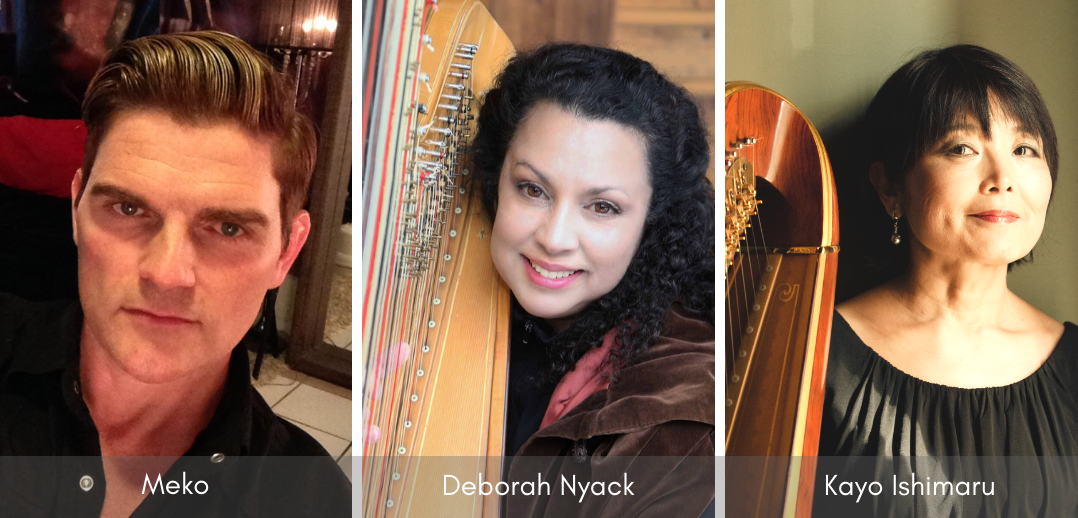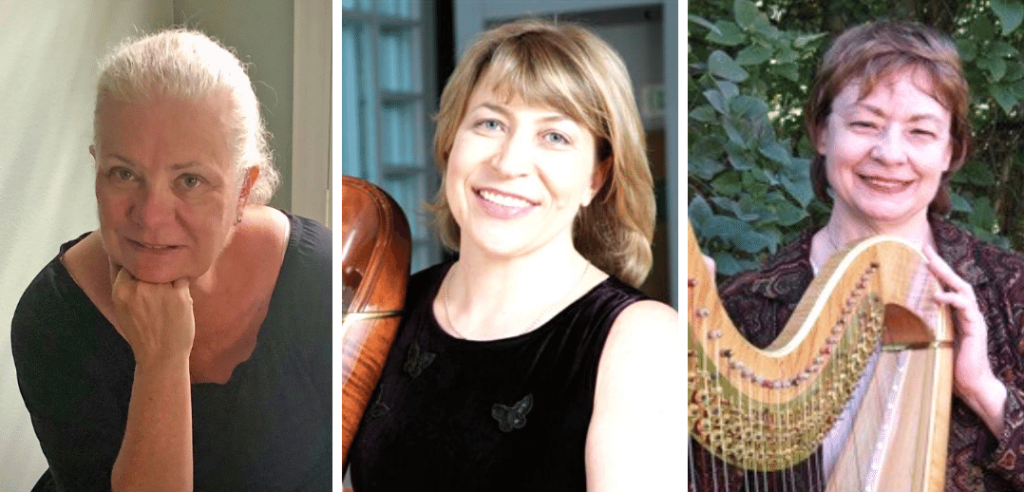For the past twenty years I have curiously watched as the trend in harp sales (with the exception of student sized instruments) has moved almost exclusively to 47 string concert grands. Manufacturers have either taken smaller harps off the market or redesigned these same models to be larger and have more strings. The general consensus seems to be that bigger is better. There is this notion that anything having fewer than 47 strings, is smaller in size, or has a straight soundboard is not a real instrument and cannot be taken seriously.
I personally have always had a special fondness for these smaller harps and would encourage others to see their advantages. Even though I am six feet tall, I find a semi grand much more comfortable to play, easier to move, and have never had an instance where the lack of a contrabass C hindered my playing. I am able to play with equal facility, produce just as much volume, and express all the same passion and musical sensitivity.
—Meko is the owner of one of the largest private harp collections in the world in Windermere, Fla.
The real question is what is the best harp for me? A perfect fit equals a better performance, fewer strained muscles, and improved technique. We have little harps for little children, and concert grands with wide spacing for tall people with big hands. The size of your physique should be the guide for you to select a harp that is proportionately appropriate for you. If you sit with ease at your instrument, it will be more comfortable to play. Also, you will be able to perform longer as your muscles will not be over-extended trying to compensate for an instrument that’s either o big or too small. You will not be as fatigued after long stretches of performing, and your sound will improve because you will be more relaxed. This concept applies to any harp you chose to play—concert grand, semi grand, Celtic harp, etc.
Bigger is not always better. The sound of a harp has more to do with wood quality and craftsmanship than size. I have played semi grands with a bigger sound and more carrying power than a concert grand. Sound is determined by the individual harp’s characteristics and the harpist’s ability to create the sound they’re looking for. You should also consider your capability to move the harp. A harp that is easier to move translates into fewer back injuries and more gigs. The perfect harp for you is one that is the perfect size for you.
—Deborah Nyack is resident harpist for Fairmont Banff & Lake Louise and is on the faculty of the Banff Center for the Arts in Alberta, Canada
I am lucky to have many harps to choose from since my husband, Dickie, and I have been collecting harps for many years. I mostly use my old style 100 semi grand which has only 46 strings. This harp has a full bass sound and carries wonderfully in the concert hall. I also decide which harp to use for different programs. For example, for chamber concerts I like a clean tone; for pops programs I prefer a brighter sound, etc. But I believe the most important thing is the quality and value of the sound of the harp, not whether it is a semi or a concert grand.
Of course good technique is also important to produce a fuller tone. During the many years I have played with the Jacksonville Symphony and Chicago’s Grant Park Orchestra, I’ve probably only needed to use the low C about once a year. In these instances, I will use a concert grand harp or re-tune the low D for those programs. •
—Kayo Ishimaru received the Premier Prix from the Paris Conservatory and is harp instructor at Jacksonville University and University of North Florida















